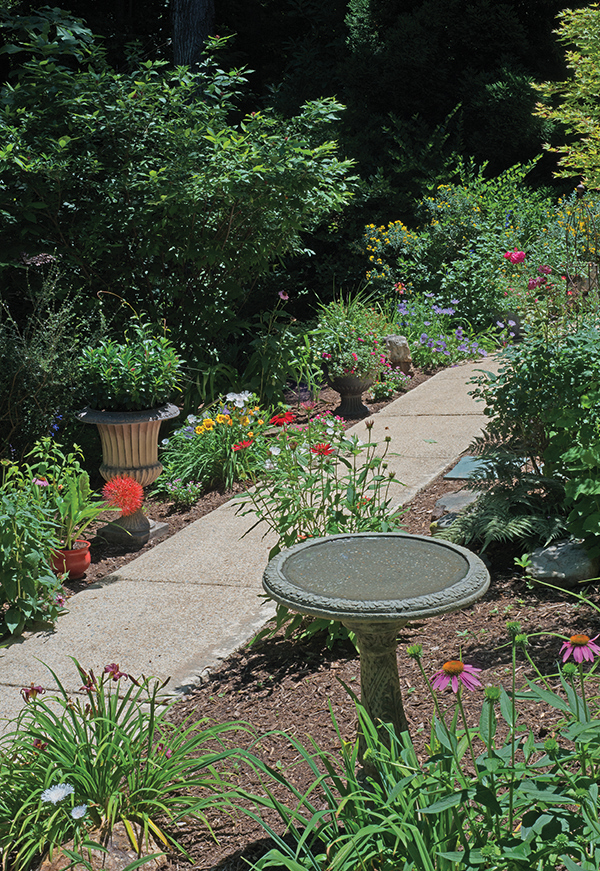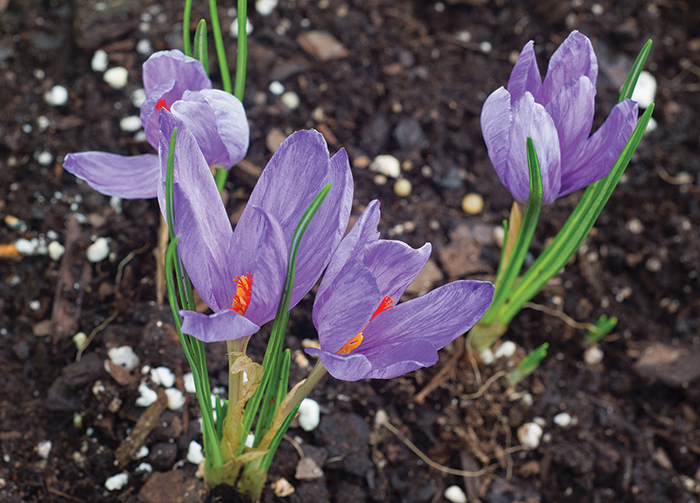For any impatient gardener, crocuses are great bulbs to grow. Planted in the fall, their thin leaves start peeping out of the ground at the beginning of February, if the winter is mild, and bright, cup-shaped flowers soon follow, serving as extra early beacons that, indeed, another spring is on the way.

Before the garden begins its annual fall fade, grab a camera and unleash your inner Ansel Adams. And shoot like a tourist in Rome—in other words, take a ton of closeup and wide-angle shots to record the many aspects of your personal plant world. Such captured moments give you a visual record of how the garden did this year, which could be an able aid in planning for future growing seasons.
As a bonus, studying these “happy snappies” before next spring’s planting frenzy will also help prevent you from inadvertently digging up any herbaceous perennials that die back to the ground over the winter.
However, for the really, really impatient gardener who doesn’t want to wait until winter to enjoy cheerful, spring-like blooms from fall-planted bulbs, there are crocuses.
No, I didn’t just repeat myself.
While most gardeners typically grow the common crocuses that pop up in late winter, backyard growers in the know double their pleasure and plant them as well as a special cousin known as autumn crocus (Crocus sativus).
As advertised, planted this month, autumn crocus bulbs won’t dally in the dirt because they will usually be in bloom before Thanksgiving. No kidding—last September, I dug in a handful and had flowers by early November.
While autumn crocus bulbs shouldn’t be too hard to find locally, if you are addicted to online shopping, at least stay regional with Southeast nurseries such as Terra Ceia Farms (terraceiafarms.com) and Brent and Becky’s Bulbs (brentandbeckysbulbs.com). And, no, these bulbs aren’t expensive—a year ago, I snagged two dozen for about 10 bucks.
Happy autumn crocuses will naturalize, meaning their early bird displays will bed-spread over the years. And just how do you keep them happy? Plant in a sunny spot that is amended and (especially) well-draining to help prevent bulb rot. Raised beds are obvious options, but smaller plantings can be shown off in pots.
Autumn crocus blooms are a pleasing light purple, but if you look into the center of one of the flowers, you will find three bright red “strings,” which are the blossom’s stigmas—and the source of the popular spice saffron. Suddenly have visions of starting a saffron farm? It takes at least 13,000 hand-picked, tiny stigmas to produce an ounce of saffron, meaning you will probably go cross-eyed before you get rich.
I mention this tale of saffron not only as an interesting factoid but to add a caution: There is another similar bulb known as “autumn crocus” that also blooms in the fall. However, all parts of this pretty plant, botanically tagged as Colchicum autumnale, are poisonous. So, plant it as well now, if you would like, but consider it only as a feast for the eyes.
In August
Pick indeterminate tomatoes, okra, green beans, cucumbers and squash at least once a week to encourage even more production and help extend the harvest of your veggie patch into the fall.
Sure, it’s hot, but the winter vegetable garden starts this month. Begin planting the seeds of such cool-season favorites as spinach, radishes, mustard, collards and lettuce.
While cool-season lawns are taking a break from the heat, warm-season grasses such as centipede, bermuda and zoysia continue to grow, so mow you must. For a healthier lawn, change the direction of your mower’s cutting pattern each week to alter the “fluff ” of the grass, which will expose different sides of the grass blades to the sun’s energizing light.
If the flower power of your bearded iris bed has started to wane, it has probably become overcrowded. Divide irises now by carefully digging up the rhizomes, snipping the leaves to about six inches high and replanting at least a foot apart.
In September
Continue filling up the cool-season veggie patch with such delectable edibles as cabbage, onions, spinach, cauliflower, radishes, Swiss chard, collard greens, kale, mustard greens and turnips.
This month is the prime time for planting peony tubers. Since these spring-blooming treats need a good chill in order to properly flower, only set the crowns about an inch below the ground to prevent too much soil insulating the tubers from cold weather.
Don’t give up on the ornamental garden. Bring some fall fl ash to your landscape by adding such pretties as chrysanthemums, dusty miller, ornamental kale, pansies, flowering cabbage, asters, violas and calendula.
Houseplants that have vacationed outside this summer should begin their transition back into the cozy indoors before nighttime temps start to dip into the 50s.
- Big Ideas
- The Hospital Next Door
- Building Community at the Block on Main
- I want it. I got it.
- Diving Deep in Holly Springs
- There & Back: Paddle the Cape Fear River
- Dig In & Drink Up: Macarons from Asali Desserts & Cafe
- Grow & Bloom: Impatient? Plant Autumn Crocus
- Restaurant Spotlight: Little Portugal
- Meet & Greet Standout Students: Alisha Reid
- Meet & Greet Standout Students: Katelyn Sheets
- Meet & Greet Standout Students: Kennedy Mitchell
- Meet & Greet Standout Students: Andreas Jordan
- So You Like to Drink Local…
- Hospital Opening Delayed







